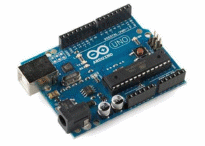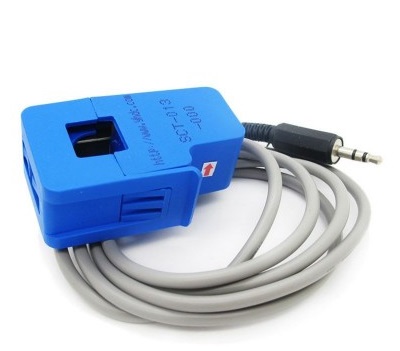
Click to enlarge Click to enlarge |
Kakhovskiy DmitriFaculty of computer science and technology (CST) Department of computer engineering (CE) Specialty "Computer systems and networks"Development and research of optimal energy efficiency of the module control algorithms "smart home"Scientific adviser: Docent Zavadskaya Tatyana |
Abstract of master's work
Development and research of optimal energy efficiency of the module control algorithms "smart home"
Introduction1 Relevance of the topic
2. The purpose and objectives of the study, expected results
3. Review of research and development
3.1 Overview of international sources
3.2 Overview of national sources
3.3 Overview of local sources
4. Development of the device
Conclusions
Sources
Introduction
Since the beginning of the new millennium, humanity is walking in the era of new technological discoveries, one of which is home automation. Time of modern man has a great value, and automation systems such as the "smart home" considerably save this vitally important resource. Including air conditioning, turn off the lights in the hallway, activate the alarm - this is just a small list of actions that can be assigned to a system of "smart home". But such devices have one drawback - a large market value. Therefore, the development of relatively cheap system, with the same opportunity to receive relevant.
1. Relevance of the topic
Since 2010, such as the system of "smart home" received a lot of publicity in the modern society, because they help to save some of the most important resources of human life - time and money. After all, innovations of this kind are aimed not only at improving the convenience of life, but also to improve the energy-saving buildings. A simple example of this is the automation of your refrigerator lighting. This method can eliminate the inefficient use of electrical appliances and heating systems, but when you consider that the price of energy is growing - it will provide significant savings in both energy and money.
More recent projects include the future home of the presence of the entire system modules located throughout the home. Each unit is a complete computer, united in a common network. Virtually every step is controlled by the owner of the system. Thanks to the device, you can configure their environment to your taste, and almost instantly change the interior. Another variant provides virtually complete exclusion from human food stock management. Everything is done automatically [1].
2. The purpose and objectives of the study, expected results
The objective is to develop a module of energy saving "smart home" system, as well as the development and research of system algorithms, allowing to increase the savings of resources.
It is necessary to develop a device of "smart house" with minimal monetary expenses, but at the same time to organize the full functionality of branded counterparts. At the same time an important goal of the work is the ability to analyse the premises energy consumption in real time and control the sources of energy consumption remotely over the Internet means.
Designing modular processing systems in smart home technology is a multi-step process and requires careful study of their functioning, and should be directed to the implementation of cost-effectiveness, reliability, flexibility, scalability systems [2].
Another task is to organize a web resource that will serve a bridge between the user and the hardware part of the system. Web resource should have an simple user interface with control system, the ability to analyse energy consumption in real time, as well as access to the statistics of the use of electrical appliances in the home.
This resource should have a system of protection. To do this, set the user authentication module. This avoids malicious interference in important web resource data [3].
3. Review of research and development
At this time, there are many developments and research related to automation systems such as the "smart home". But the information about all the results and technology closed. This complicates the search for documentation in this thread.
3.1 Overview of international sources
In the world there are many publications on the basic principles of operation of room automation. But all of them are purely for informational purposes.
Publication S.Helal, W.Mann, H.El-Zabadani, J.King; Y.Kaddoura, E. Jansen - The Gator Tech Smart House: a programmable pervasive space // IEEE Xplore Digital Library. The article with more information about how the process of the system and of the hardware and software parts of the system [4].
Publication Robert J. Orr, Gregory D. Abowd - The smart floor: a mechanism for natural user identification and tracking // CHI EA '00 CHI '00 Extended Abstracts on Human Factors in Computing Systems, ACM New York, NY, USA ©2000 An article about the innovative technology of tracking visitors "smart floor" [5].
3.2 Overview of national sources
On the domestic resources as there are articles on the topic. In addition to the enormous mass journals with self-made automation systems facilities by radio amateurs, and there are scientific publications.
Publication Волшин М.Е., Найбауэр Д. Ю., Тутов И.А. - Система «умный дом» в современном мире. // XII Всероссийская научно-практическая конференция «Технологии Microsoft в теории и практике программирования» Article about possible hardware cost in the construction of automated space systems [6].
Publication Кусакин И.И., Михайлов Д.М. - Программно-аппаратный комплекс автоматизированного контроля целостности инфраструктуры жилых помещений для социального обеспечения // Национальный исследовательский ядерный университет «МИФИ» Article on the use of "smart house" in the social sphere [7].
3.3 Overview of local sources
As part of the Donetsk National Technical University (DonNTU) works in the development of systems of "smart home" has not been found, but there are some jobs that are closely related to the topic.
Work Master DonNTU Kakhovskiy Denis A. Исследование закономерностей формирования погодных параметров на территории города Донецка. Разработка визуальных методов оценки состояния погоды [8]. In the work describes the sending of climatic parameters to the portable device via PHP data bases.
Work Master DonNTU Miraniuk Maxim V. Разработка модели взаимодействия контроллеров на основе интерфейса ZigBee [9]. In the work describes the interaction between controllers based on ZigBee interface, which often use in housing automation systems.
These works are of great theoretical framework that can be applied in the design. However, my subject is necessary in more detail acquainted with methods of data transmission between the device and the user.
4. Development of the device
System design can be divided into two parts: hardware and software.
The hardware of the system is represented by platform Arduino (pic.1) with extensions and the physical modules. Arduino - a tool for the design of electronic devices more closely interacting with the surrounding physical environment, than standard PCs. In this version of the Arduino UNO platform will be used - the most popular version of the underlying platform. This platform is intended for physics calculations (physical computing) open source, built on a simple circuit board with a modern environment for software development [10].

Picture 1 - Appearance Arduino UNO
Arduino uses Atmega328 microcontroller that has 32 KB of flash memory. It would be sufficient to perform the tasks entrusted to the platform. The remaining processing is to be distributed on the web resource.
Microcontrollers Arduino characterized by the presence of pre-needled them loader. With this bootloader user downloads a program to the microcontroller without the use of traditional individual hardware programmers and is connected to a computer via USB-interface [11].
To remote control device, you must connect the device to the Internet. During the design will be used Expansion Board Arduino Ethernet.
Since the system must be universal and understood of any group of users, you must use a non-invasive method of connecting the system to the electrical room. AC current sensor will be used to determine the overall energy facilities CST-013-000 100A (pic.2)

Picture 2 - Appearance the AC current sensor CST-013-000
Device Management is carried out using cards Arduino Relay 10A relay with a supply voltage of 5V, which corresponds to the supply voltage of the microcontroller used. Schematic diagram Arduino Relay 10A is shown in pic.3. At the relay control signals will be received by means of radio frequency at 433 MHz. This connection method allows you to get rid of the use of matching circuits, to organize full remote control, and simplifies initial system installation in any room.

Picture 3 - Electrical scheme Arduino Relay 10A
A set of sensors for climate monitoring room is chosen individually, depending on the task and the parameters.
The software system is shown in the code of the microcontroller (Arduino sketch) and the web-site, which enables remote control of "smart home" system and analyze all the scorecards. Web resource must have the protection system. To do this, set the user authentication module. This avoids malicious interference in important web resource data.
In the work will be used tools phpMyAdmin. They will conveniently transfer data between objects in the system, protect data using login and store all parameters in a web-based resource data for the purpose of their further use. Other data will be implemented via PHP and JavaScript.
The algorithm will analyze climatic data space by automatically adjusting heating devices or recommend remote user to make changes in the system, as well as to prevent the use of lighting fixtures, if no people in the room.
It would be important to the user interface. It should be as intuitive and easy for the average user. System site will be available as desktop PCs, as well as on all types of portable devices. management tool operation example is shown in pic.4.

Picture 4 - Demonstration of the management interface
(animation: 19 frames, 7 repeat cycles, 190 kilobytes)
Conclusions
The developed control system eliminates the probability that currently unused appliances will consume energy. This will improve the energy efficiency of your room and create economic benefits. And also will provide an opportunity anywhere in the world to carry out monitoring the state of the premises, such as the temperature of the room, the total power consumption and the presence of active appliances.
At the moment, the work is not over. There is a stage of the hardware design of the system "smart home". Complete text of this work will be from my supervisor Zavadskaya T.V. After my defending the my work in july 2017.
Sources
1. Smart home, everything about the accommodation and its automated device - "Housing Projects of the Future", [Electronic resource]. - Access mode: smarthouse2.ru
2. Атрощенко В.А. К вопросу формирования данных систем управления умного дома / Атрощенко В.А., Кошевая С.Е., Серикова М.В. // Journal "Modern problems of science and education"
3. Каховский Д.А. Разработка и исследование алгоритмов управления модуля энергосбережением системы «умный дом» / Каховский Д.А., Завадская Т.В.// Материалы Международной научно-техническая конференции студентов, аспирантов и молодых ученых «Компьютерная и программная инженерия – 2016», Донецк
4. S.Helal, W.Mann, H.El-Zabadani, J.King; Y.Kaddoura, E. Jansen - The Gator Tech Smart House: a programmable pervasive space // IEEE Xplore Digital Library, [Электронный ресурс]. – Режим доступа: asasni.cs.up.ac.za
5. Robert J. Orr, Gregory D. Abowd - The smart floor: a mechanism for natural user identification and tracking // CHI EA '00 CHI '00 Extended Abstracts on Human Factors in Computing Systems, ACM New York, NY, USA ©2000, [Электронный ресурс]. – Режим доступа: dl.acm.org
6. Волшин М.Е., Найбауэр Д. Ю., Тутов И.А. - Система «умный дом» в современном мире. // XII Всероссийская научно-практическая конференция «Технологии Microsoft в теории и практике программирования», [Электронный ресурс]. – Режим доступа: earchive.tpu.ru
7. Кусакин И.И., Михайлов Д.М. - Программно-аппаратный комплекс автоматизированного контроля целостности инфраструктуры жилых помещений для социального обеспечения // Национальный исследовательский ядерный университет «МИФИ», [Электронный ресурс]. – Режим доступа: mn.mephi.ru
8. Каховский Денис Андреевич - Исследование закономерностей формирования погодных параметров на территории города Донецка. Разработка визуальных методов оценки состояния погоды. // Автореферат магистерской работы, [Электронный ресурс]. – Режим доступа: masters.donntu.ru/2013/fknt/kakhovskiy
9. Миронюк Максим Владимирович - Разработка модели взаимодействия контроллеров на основе интерфейса ZigBee. // Автореферат магистерской работы, [Электронный ресурс]. – Режим доступа: masters.donntu.ru/2013/fknt/mironyuk
10. Official website of Arduino, [Electronic resource]. - Access mode: arduino.ru/About
11. Wikipedia - the free encyclopedia, the article «Arduino», [Electronic resource]. - Access mode: ru.wikipedia.org/wiki/Arduino